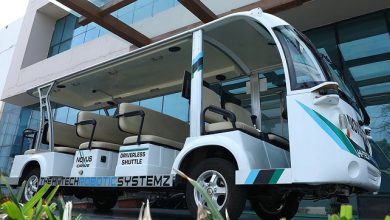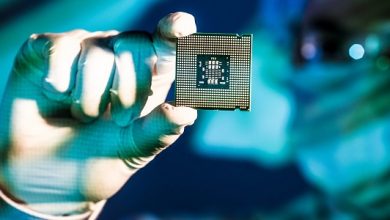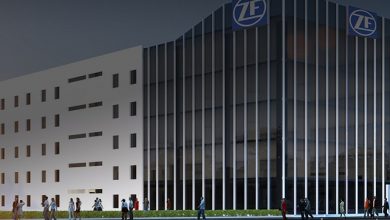Surge in TFT Demand & Consideration for in Cabin Air Quality in Automotive Industry

COVID-19 has made everybody more conscious towards hygiene, air quality around us. At the same time we’ve become more connected & reliant on the internet since the start of the pandemic, a massive 47 percent increase in broadband information usage, and more gigabit and terabyte endorsers.
Usage of sensors has also surged and combined with edge processing or cloud processing with higher cognitive process algorithms delivers insights into our everyday life like never before. Further the emerging technologies like AI, IoT, Machine learning, Deep Learning etc. have created possibilities for solving many problem statements.
With more demand for comfort and up-to-date information, consumer wants to visualise the insights promptly & elegantly. This has drifted the in-car display market towards TFT (Thin Film Transistor) LCD (Liquid Crystal Displays) displays and created new market for in-vehicle air quality solutions. This article reviews TFT LCD displays and in-cabin (or in-vehicle) air purification solutions in the automotive space.
In Cabin Air Quality with respect to COVID-19 or other viruses
“In Vehicle Air Quality” is a major concern since this COVID-19 pandemic especially due to the fact that the infection is airborne. The question on everyone’s mind is how can we make the air inside the vehicle cabin for personal and particularly shared mobility?
Cabin air filters (carbon or dust filters) were originally designed to get rid of large particles like pollen and dirt from your car’s air. Consequently, they’re not good at filtering smaller, submicrometer particles. Though newer technologies like HEPA (high efficiency particulate air) filters offer some relief, HEPA can stop particles only up to 0.3 microns. The virus particle is typically xx microns. Clearly extraordinary times like current call for better technologies to cleanse the air like this Mckinsey article.
Mckinsey reports that Ionic purifier help in cleaning air
(https://www.mckinsey.com/industries/advanced-electronics/our-insights/can-hvac-systems-help-prevent-transmission-of-covid-19) Sharp Plasma Cluster Ionizer Module certified by 30+ labs globally offers a strong solution to this urgent in vehicle air quality challenge. Plasmacluster Ionizer breaks moisture present in the air by an electric arc to release positive hydrogen (H⁺) and negative oxygen (O₂⁻) ions that form clusters to transform into OH radicals. The positive and negative ions are the same as those generated in nature by a waterfall.
The OH radicals cling to viruses or other pathogens and extract hydrogen (H) from their surface to form moisture (H2O). Extracting hydrogen from the surface of the virus or a pathogen, damages its defence, think of it as puncturing its spacesuit and therefore neutralizes the pathogen – so it is not infectious anymore.
Plasmacluster™ ions purify the air and doesn’t have any adverse effect to humans even at excessively high ion concentration
Tests conducted by Sharp, Nagasaki University & Shimane University have shown that Plasmacluster Ionizer can reduce airborne corona virus by more than 91% and adhered coronavirus by more than 99%. Besides the effectiveness of PCI technology in eliminating pathogens, allergens & VOCs has been tested and proven by more than 30 independent institutions from 10 different countries..
Where to place the Plasma Cluster Ionizer?
The way Sharp has designed it, and refined over years, makes it operational with a simple 12V supply. From a system integration point of view, this becomes a very straight forward module that does its job. SHARP Plasma cluster Ionizer can be placed at HVAC output vent where air-conditioned air is introduced to the cabin. This will help positive & negative ions to scatter in air effectively and helps in cleaning the air.
Air pollution parameter of in-cabin like ION counts generated by plasma cluster ionizer and other poisonous gasses with the help of different sensors can be used to display on TFT screen which may help passenger to take decision before using the shared mobility.
Newer automobiles have multiple applications for the most recent TFT LCDs
Personal mobility is not just about getting from one point to other but about a comfortable and pleasing experience. Thus, present day passenger cars are embracing a suit of features to please vehicle owners and passengers such as:
- on-avenue entertainment,
- Concierge services & other desired services.
- surrounding awareness (insights form sensors) / driver assistance / driver wellness etc
- a great user experience interacting with all these value added systems through a crisp and clear, smart display. TFT LCDs offer a good value proposition here.
Automotive display trends
With the rapid evolution of driver information/ assistance technology, cars are equipped with multiple displays like:
- Instrument cluster.
- Central information display,
- Mirror replacement displays,
- Multiple entertainment displays for the rear seats.
- Transparent Displays for Car Windshields and Window Advertisements
- Navigation
- Air Quality Information/Ion’s concentration
Adding more and better displays to the car certainly calls for cost performance trade-offs. As the trend goes the decisions are made in the favour of adding such displays in favour of passenger experience.
Trends driving the automotive displays
Based on Display Type, The marketplace is bifurcated into LCD (Monochrome),TFT-LCD & OLED. TFT-LCD is anticipated to preserve the most important marketplace share, with the aid of using Display type. TFT sizing offers the best “cost – value” or “right cost – experience” proposition.
Instrument Cluster Market in Automotive Bifurcation by Size
- 5–8 inch
- 9–11 inch
- >12 inch
Entry level vehicles, mid-segment vehicles, and LCV’s are equipped with a 5-11 inch instrument cluster that helps to maintain the overall cost of the vehicle. Greater than 12 inch LCD cluster is estimated to be the fastest growing segment of the instrument cluster market, by display size. Higher size digital instrument cluster can be seen to be increasing in demand with increase in different features in a digital instrument cluster, and growing demand for vehicle aesthetics.
“The growth of the” or “the emergence of” or “the dawn of the” Electric Vehicle or so
The Battery Electric Vehicle segment is estimated to be the largest growth market for the display instrument cluster. Asian region is estimated to be the largest market for Electric Vehicle. With increase in strict norms for emission Electric Vehicles sales is increasing at a rapid pace with increase in rapid development of charging infrastructure, zero-emission advantage, and government support.
As EVs tend have much higher built in computational power, aptly dubbed as “computers on wheels” the UI (user interface) and UX (user experience) tends to be much elaborate demanding bigger and better displays
Impact of 5G and other Wireless Technologies
5G offers high internet speed, which helps in coordinating auto Display System with ingenious applications. These applications would require better quality rendering, which can trigger the interest for automotive smart display. This combined with autonomous driving will call for, giant size display panels, as opposed to the customary dashboards. AR and VR gadgets influence 5G to supply a much better experience. Both AR and VR require higher display resolution for better execution and experience.AR HUD (Head Up Display) is a high level driver assistance system which shows real time data & help driver to stay more active and focused. VR help vehicle retailers to decrease the display area size, cut expenses, and upgrade client experience all simultaneously. VR showroom help clients to sit in a chair and can have real time experience of driving the particular car..
How do I chose the right display for my car design?
The screens generally used in vehicles range from 1 to 12 inches in size. While display technology updates are commonly associated with PC TV screens, automotive displays too are at the forefront of innovation. Several new technologies like Sharp’s Free-form display for example are pioneered for Automotive market. The latest TFT LCD Display have great picture quality thanks to the increased pixel density, high brightness and contract and coatings that enhance visibility in a wide range of ambience lighting including bright sunlight, which is a necessity of automotive application. .
The essential features for automotive displays are:
- High Brightness & Anti-Glare – More brightness and higher contrast make the display clear even during bright sunlight conditions. Manufacturers enormously brought down surface reflectivity with anti-reflective coatings, making the display simpler to peruse during high-sunlight glare conditions. Progressive Super View Technology of Sharp for example gives extremely crisp image under sunlight without pumping more power from backlight which helps in maintaining the life and quality of product.
- Screen size & resolution: As we discussed, auto displays ranges from 1.5 inch to more than 12 inches. There’s a trend toward bigger display sizes (up to twenty inches), with the reception of solid state and advanced digital cluster and thusly the movement toward HD resolution moving from wide VGA (800 x 480) to 720p and 1080p.
- Form Factor of Display – In Automotive most commonly used aspect ratio are for display size between 7” to 12.3” are 16:9 5:3 16:9 16:9 16:6.From Hatchback, Sedan to SUV height varies a lot and therefore Aspect Ratio plays a vital role for display selection. Recent innovation like “FREE FORM” help automotive designers to break free from the rectangle to any size or you can have any form factor of display.
Free Form Display has set the automotive world abuzz. Device that may be shaped to fulfil a large range of user needs due to the incorporation of IGZO technology and proprietary circuit design methods. Conventional displays are rectangular because they require a minimal width for the bezel so as to accommodate the drive circuit, called the gate driver, round the perimeter of the screen’s display area. With the morpheme Display, the gate driver’s function is dispersed throughout the pixels on the display area. This enables the bezel to be shrunk considerably, and it gives the liberty to style the LCD to match whatever shape the display area of the screen has to be.
- Interface – Low-Voltage Differential Signalling (LVDS) could be a popular choice for giant LCDs and peripherals in need of high bandwidth, like high-definition graphics and fast frame rates and most ordinarily utilized in Automotive TFT application. It’s an excellent solution due to its high speed of data transmission while using low voltage. Two wires carry the signal, with one wire carrying the precise inverse of its companion. The electrical field generated by one wire is neatly concealed by the opposite, creating much less interference to nearby wireless systems. At the receiver end, a circuit reads the difference (hence named “differential”) in voltage between the wires. Therefore this doesn’t generate any noise or gets its signals scrambled by external noise. The interface consists of 4, six, or eight pairs of wires, plus a pair carrying the clock and a few ground wires.
- Wide viewing angles: Centre stack displays should be visible to both drivers and passengers, including those within the rear seat(s). LCD display modules are designed to provide the best contrast and readability in one of four directions known as the ‘viewing angle’ or ‘optimal viewing direction.’ These four directions are laid out in the shape of a clock. The top view is at 12:00 p.m. (12:00 p.m.) and the bottom view is at 6:00 p.m. (6:00 p.m.).
- Wide temperature ranges: Temperature ranges can typically span from -40°C to quite 85°C.Such high temperature range is required because in summer ambient temperature add up with the operational temperature of TFT where normally in desert area ambient temperature rise to 55°C in summer.
- Colour depth: Higher-resolution displays might have to upgrade from 18-bit red green blue (RGB) to 24- bit RGB to attain a wider colour gamut.
- Long display lifetimes and sustained production support: Displays must support design and production cycles of a minimum of five years, extendable up to 10 years because of vehicle warranties.
- Better refresh rates & response times: Keeping away from slacks is basic for warning indicators & navigation functions like maps and traffic updates.
- Low power consumption -Low power consumption enables better fuel consumption and allows components to be placed in “hot spots.”
- Touch & Glass Bonding – Optical bonding is the method involved with overlaying touchscreens, glass or plastic cover lens, adding EMI filters, and other display upgrades to a LCD. A layer of glue is incorporated between the cover layer and display to fill the air gap abandoned in a regular edge or gasket bonding. Optical Bonding helps in enhancing clarity, view ability, reduced reflections and make TFT more rugged which are critical factor in automotive application”
The trends in the automotive display & air quality are dynamic & exciting! This article attempts to get us started on this exciting drive. Are you ready to gear up to overtake these significant landmarks in technology mobility? (pun intended 😊)
Author:

Abhay Kataria
Manager-India
SHARP Singapore Electronics Corporation Pte Ltd
Abhay Kataria is a pro in semiconductor industry, having contributed to application engineering, product marketing and business development in India. He is the marketing manager at Sharp Singapore.
Published in Telematics Wire





